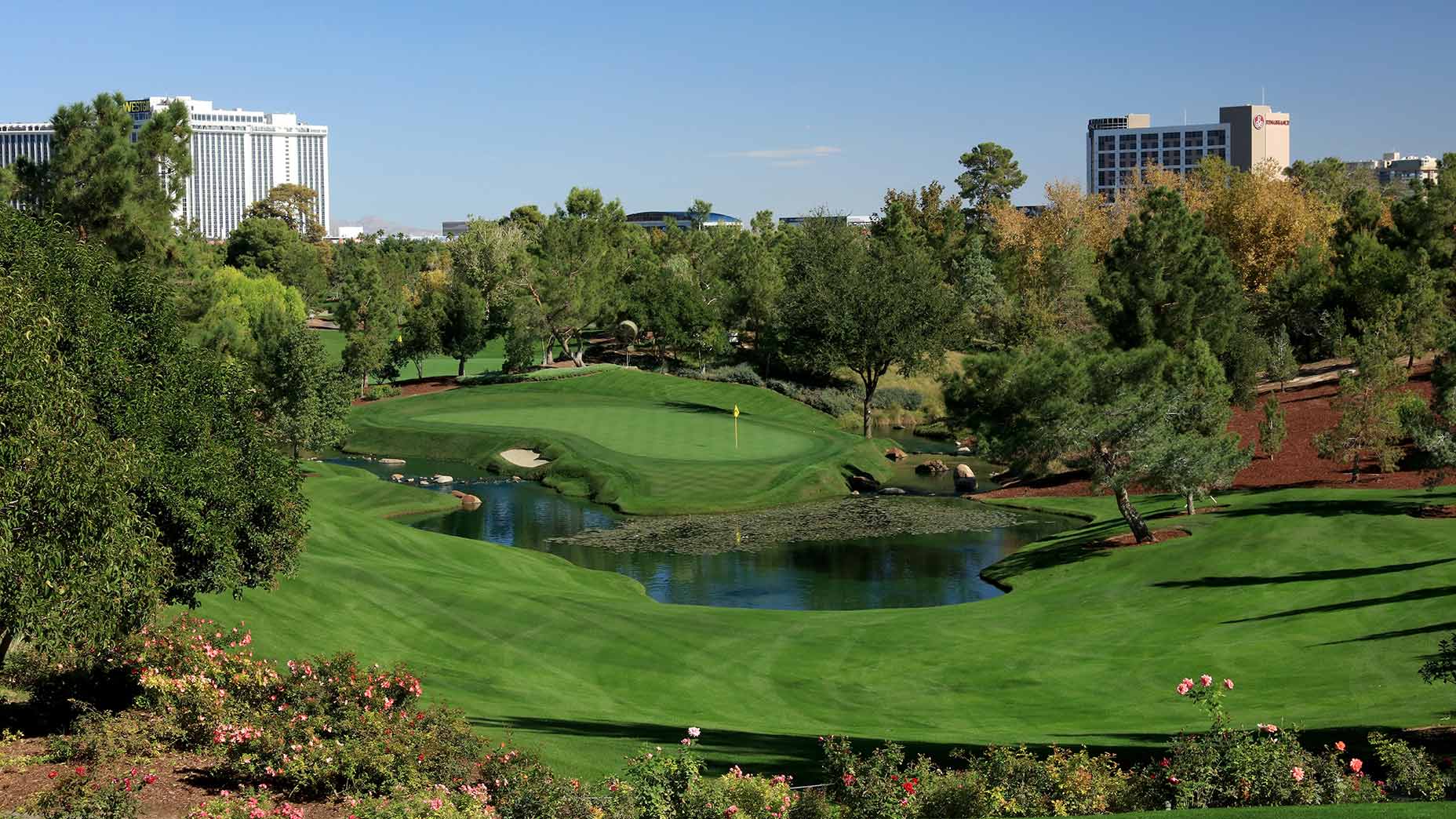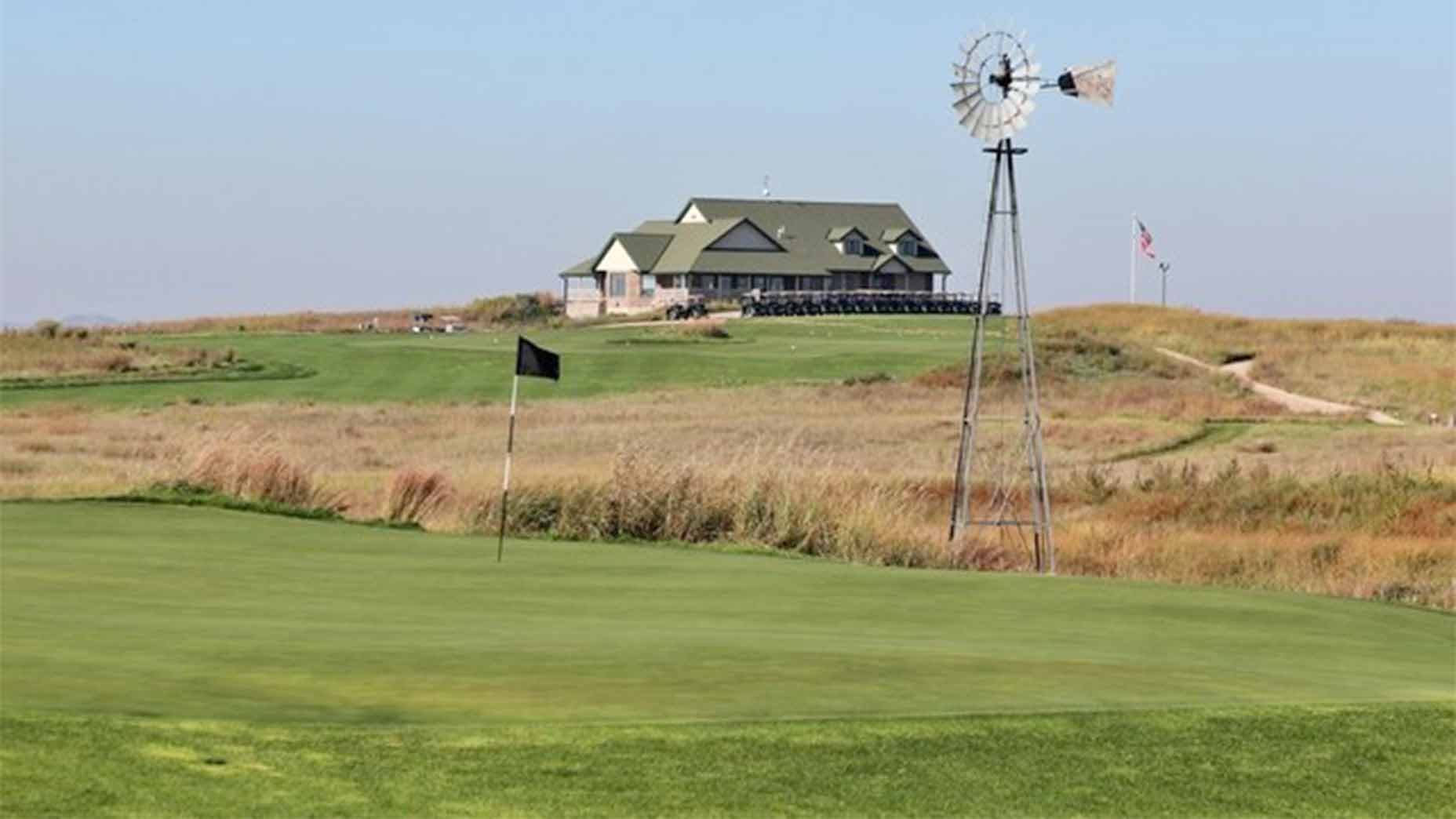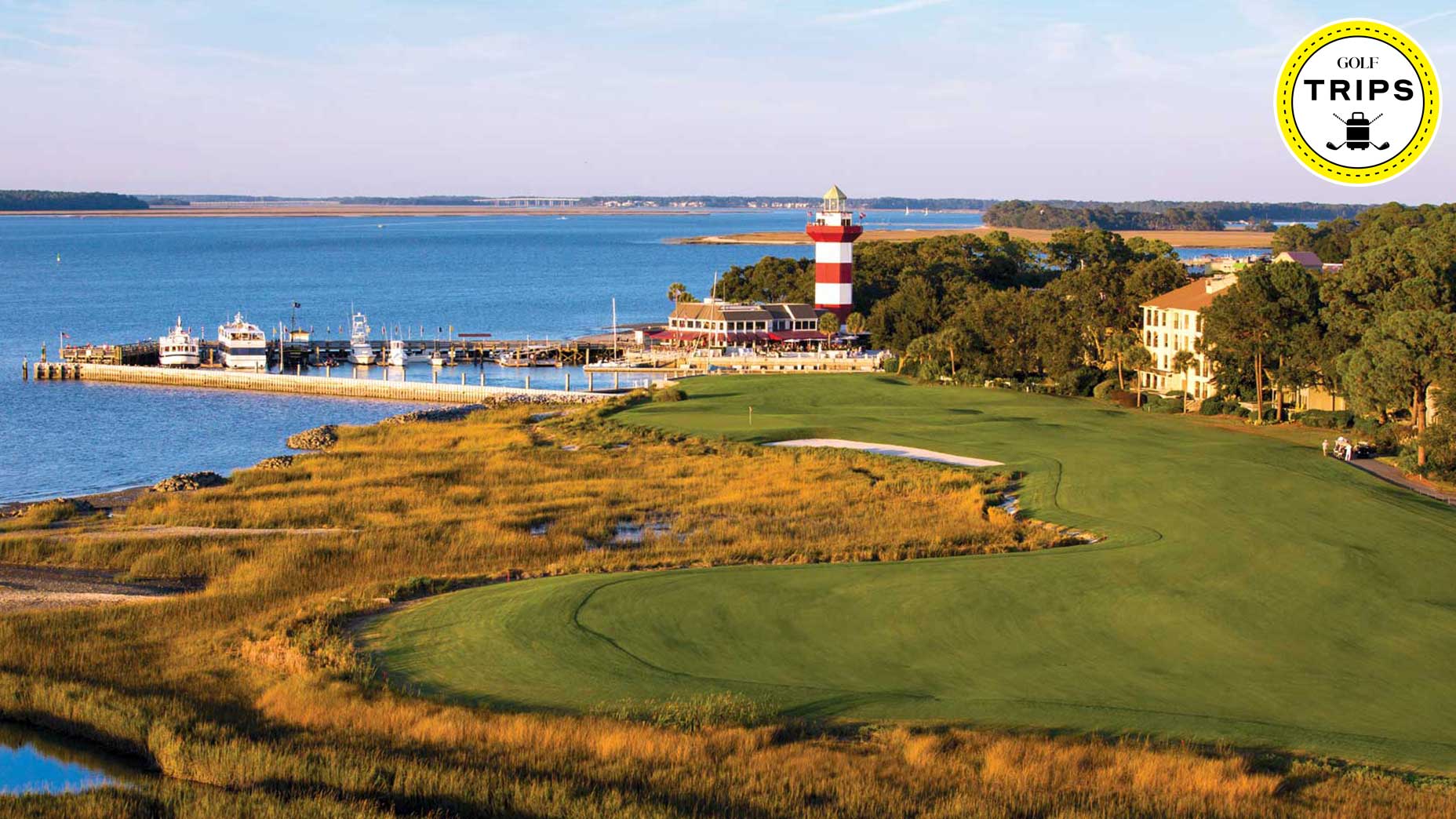 10 reasons attending the Masters is different from any other tournament
10 reasons attending the Masters is different from any other tournament
Tour Confidential: Our expert raters dissect new Top 100 Course ranking’s surprises, trends, hits, misses
Check in every week for the unfiltered opinions of our writers and editors as they break down the hottest topics in the sport, and join the conversation by tweeting us @golf_com. This Sunday, we gave our normal contributors a bye week to welcome in some of GOLF’s Top 100 course panelists for their well-traveled and well-respected insights into GOLF’s recent unveiling of the Top 100 Courses in the World. For the full Top 100 list, click here, or pick up your own copy of the loaded December/January double issue of GOLF Magazine.
1. GOLF Magazine and GOLF.com unveiled their latest edition of the Top 100 Courses in the World, and while it’s no surprise Pine Valley was No. 1 (again!), there were some big movements — both up and down — in the 2020-21 list. What was the biggest surprise to you?
Josh Sens (Oakland, Calif.): It was a happy surprise to see Somerset Hills, in New Jersey, jump as high as it did (up 33 spots to No. 42). I’ve heard people grouse that the contrast between the two nines (the front is heathland; the back is wooded) is too jarring. But I think they’re great complements to each other. It’s my favorite of the Tillinghast courses I’ve played, so I like seeing it leap closer to what I think of as its rightful place.
Barry Hyde (Neshanic Station, N.J.): Unlike many newish Top 100 courses, Friar’s Head (up seven) has not lost momentum. It continues to be sought after by those visiting eastern Long Island, just behind National Golf Links of America and Shinnecock Hills. The charm, playability and variety of holes make it the most fun stop on a trip out that way. Well deserved!
Thomas Brown (Los Angeles, Calif.): Rye (No. 67) back in the Top 100. Rye’s rippling fairways make the most natural links. It’s simply an ideal setting to play bouncy shots along the ground. The location of the golf course is relatively isolated and not necessarily near any on the Open Championship rota tourist trail.
Mitch Reese (Vero Beach, Fla.): I was delighted to see Southern Hills jump up 20 places to No. 49. Shows the benefits a thoughtful restoration can have on an already great golf course, which Gil Hanse accomplished here.
Chick Wagner (Oakmont, Pa.): I have a few different categories of “surprises” — pleasantly surprised, disappointingly surprised, dramatically surprised and justifiably surprised. There are many courses that have moved significantly, but since I am such a huge fan of difficult major championship venues, I would say I’m surprised to see Carnoustie drop four places to No. 32. It is a course that is the most difficult in The Open rotation but can be played by every type of player because most of the challenges are either left or right, and the course plays right in front of you. All you have to do is pick the correct angles. It may not be pretty, but it is wonderful!
Simon Holt (Edinburgh, Scotland): Trump International Golf Links’ big dive — it dropped almost off completely (No. 54 to 100). Out of dozens that I’ve spoken to, not one golfer has said anything other than the course is spectacular. It has an excellent set of par-3s, strong and varied par-4s along with an excellent (albeit controversial) parcel of land for golf. I scratch my head at the par-5s, mainly for being over-bunkered, but outside of that the course is very impressive. You could be forgiven for thinking the ownership has unfairly swayed some opinions in the wrong direction.
2. What’s the key takeaway from how this year’s list has evolved from the last iteration?
Sens: More of an emphasis on firm, fast and fun, with the artistry of the design getting priority over tournament pedigree or fearsome reputation (see Baltusrol falling out of the Top 100, for instance). The list had already been moving gradually this way in recent years, I think, but this year marks the most dramatic shift in that direction that I’ve seen.
Brown: Natural golf. Dream golf, to borrow from Mike Keiser. The fingerprints golf architects and superintendents place on the land are a small part of bringing a special golf course to life. The majority of properties in the Top 100 are natural linksland or heathland variety which may only be found in select locations. Gil Hanse talks about the value of the walk on holes and from one hole to the next as being one of the essential parts to enjoy. This Top 100 grouping certainly celebrates that aspect of the game.
Hyde: Seems very fresh and fun without being tied to past lists.
Reese: Seems like there is a trend away from valuing long, difficult courses in favor of those that can be played and enjoyed by golfers at all levels, yet still challenge the better player.
MORE: The next 50 courses | A U.S. state-by-state guide to the rankings | How we ranked them
Wagner: The courses exhibiting the largest moves downward are some of the more recently designed and opened courses with huge budgets. However, our panel obviously has an appreciation for the newly designed and renovated courses that appreciate walking and fun. I appreciate the fact that our panel primarily considers the golf course and doesn’t get carried away or influenced by the spectacular clubhouses and amenities, even though we do have some represented.
Holt: Current trends in golf-course design and maintenance have clearly had an impact on the raters. With trends like removing fairway mowing lines and lauding firm and fast conditions, courses such as Somerset Hills and Garden City have rightly been rewarded. The classics are back.
3. Which Top 100 courses do you consider the most underrated and overrated?
Sens: At No. 38, The Country Club in Brookline, is, I believe, a course whose history and exclusivity give it a bit of an artificial bump. Tournament pedigree does the same for the Olympic Club (Lake) at 79, I think. For underrated, I’m probably in the very small minority here, but I like Sunningdale New (73) every bit as much, and maybe a little more, than Sunningdale Old (29). Brawnier off the tee makes it more compelling overall. I’m glad I’m not in grade school anymore, because the architecture nerds would beat me up at recess for saying that.
Brown: Overrated: TPC Sawgrass. Poor routing in swampland. Underrated: Hirono. Martin Ebert’s firm just finished a revitalization of the golf course, and the photos look spectacular. Putting on those greens and playing out of the surrounding bunkers really give meaning to photos that don’t do it justice.
Wagner: Most overrated is Cypress Point. I may get eliminated from the panel for this comment but other than the views, an unbelievable walk and it’s exclusivity, I don’t believe it is worthy of its ranking. How can the second-ranked course in the world have the worst hole in golf as its finishing hole? If someone asks you what is the worst hole at Pine Valley, Oakmont, Shinnecock Hills, Royal Melbourne, Augusta National, Royal Dornoch, etc., then you can’t come up with an answer. That’s why they are voted so well. Also, I don’t believe their par-5s on the front nine are very good. (I would imagine I won’t be invited back again anytime soon.) Most underrated is North Berwick. I am so happy to see that it has moved up 14 spots to No. 37, but it still deserves to be higher. It is the most fun golf course in the world. It is the home to the classic “template” greens that have been copied hundreds of times over the years by all the great architects — Raynor, MacDonald, Coore/Crenshaw, etc. Where else can you experience the unique Scottish obstacles of the stone walls on so many different holes? Plus, they have a short course for the beginners to learn on. It’s marvelous!
Holt: Most underrated is Muirfield. Sitting pretty at No. 12, but for me it should be firmly in the top five. It has a storied routing, a great set of par-3s, both tough and accessible par-4s, but the star of the show in design terms is the set of par-5s. There are few courses in the world that have three excellent par-5s, each one providing the golfer a different challenge. Muirfield is undeniably intimidating off the tee but the fairways are actually much more generous than advertised. The course comes under fire for being too penal, but I don’t think that’s fair. Best-in-class routing, bunkering and par-5s — and the rest is pretty good, too! Most overrated: I have to go back to Oakland Hills South after Gil Hanse waves his magic wand. I can remember about three holes and after having a fun round on the North Course, the South didn’t give me much to write home about. If Balty can drop out completely, I’m not sure how this one survived in its current state. None of that makes it a bad course, far from it, but we’re trying to identify the best of the best. The bones are there.

4. Which course not in this year’s Top 100 do you most expect to see on the next edition of the ranking?
Sens: I haven’t been there myself, but people whose opinions I trust tell me the reworking of Sankaty Head on Nantucket makes it a must-see. Of the sites I’ve actually visited, I’ll go with the Pepper Pike Club in Ohio, a William Flynn design that has long stayed willfully under the radar but is now undergoing a restoration that is going to get it some attention, like it or not. In my opinion, both the land and the routing are even better than another great Flynn course — The Country Club — which is right next door.
Brown: Royal Cinque Ports, in the town of Deal in southeast England. To me, it’s a confounding omission. It’s a rare links golf course with dramatic fairways and an epic story to tell on the closing holes. When PGA Tour players describe a championship course as being all in front of you, I’d have to say Deal is quite the opposite — the 1909 and 1920 Open Championship venue is challenging with its fairways throwing your ball left and right along the contours at whim. It’s exhilarating golf but perhaps that is what has some Top 100 panelists voting against it, in the name of fairness rather than accepting the rub of the green.
Hyde: Plainfield, in New Jersey. While bounce and firm conditions are being celebrated, Plainfield was hurt by hosting two PGA Tour events in soggy conditions that didn’t showcase this delightful design. While its N.J. neighbor, Somerset Hills, moved way up, Plainfield has yet to be exposed for the Top 100 course it is.
Reese: It would be a stretch to say I expect this, but if Shanqin Bay can sort out its problems with the Chinese government it ought to be back in the Top 100. Such a shame to see a great golf course sidelined by political factors.
Wagner: Even though I haven’t seen the new course at Bandon Dunes, Sheep Ranch by all reports will be ready for the Top 100 in two more years.
Holt: South Cape Owners Club in Korea. In the current Instagram-golf-course-design age, this place has golfers drooling before the first shot is struck. Better still, the course is certainly not all froth and no coffee, with some real substance to the design. Kyle Philips had a tough piece of land to work with and there are some steep walks, but it’s wow hole after wow hole with the all-world par-3 16th leading the bunch. There is also value to be found at holes like the excellent short inland 7th, with bunker placement to challenge every level of golfer off the tee.
ADVERTISEMENT
5. Great Britain and Ireland had 30 courses on the list, which is a 60 percent increase compared to GOLF’s list from 1987. Have that many more great courses popped up in GB&I in the last 30 years, or are some long-time links just now getting the attention they deserve?
Sens: The latter. It’s all about a change in tastes, not a sudden explosion of great new courses. I see an analogy in food and what began in this country with California cuisine. It wasn’t anything new. People just woke up to the fact if you started with good ingredients (or, in the case of golf, good land), and didn’t mess with it too much, the results would be much better than the fussy or artificial stuff they’d been gorging on for years.
Brown: Both, equally. Tiger Woods saying the Old Course at St. Andrews is his favorite golf course is a good start. Watching Tiger win on a barren Royal Liverpool in “proper British summer conditions” in 2006 was a good second act. Mark Rowlinson’s research found online at golfclubatlas.com has certainly helped awareness. Architect Martin Ebert made significant contributions to links courses, particularly at Turnberry. Mark Parsinen, who passed away prematurely in 2019, must be remembered for building Kingsbarns and Castle Stuart. Donald Trump’s contribution at Aberdeen and Herb Kohler’s investment in St. Andrews should be recognized. Now, if we could only get Mike Keiser’s Coul Links built in Dornoch.
Holt: They’re finally getting the attention they deserve. In the ’80s great venues such as the Old Course, Muirfield and Royal County Down were featured on the lists. This promoted golf travel to Scotland and Ireland, which in turn shone the light on other great links courses. To use Muirfield as an example, do you think North Berwick would have got much attention from the majority of U.S. visitors if they weren’t in East Lothian playing Muirfield? A World Top 100 list without North Berwick is lunacy! A lot is said about the lists but they certainly help drive golf travel, which in turn means other courses can be discovered. You’d also have to say that Tom Doak’s Confidential Guide opened eyes to the brilliant links courses that had until that point flown under the radar.
Wagner: There are many factors contributing to this increase, but I believe GOLF Magazine and other publications have done a good job of exposing overseas golf to the masses. These courses have always been there, but someone had to sell them. Give credit to the countries and their tourism departments, give credit to the tour operators, give credit to the fantastic photographers that love to show off the courses without housing developments surrounding the courses. The strength of the U.S. dollar and an overall good economy around the world have made it easier and more affordable to travel. The true golf aficionados want to walk and play and aren’t as much interested in the off-course amenities as they used to be. We don’t want to go to Las Vegas with all the other distractions — we want to play golf with our friends and family.
6. Forget courses, what’s the single best HOLE on the list?
Sens: Jeez, just one? I’m trying to think of a better par-5 than the 13th at Augusta. Nothing’s coming to me at the moment. Also: though it’s been years since I’ve played it, the par-3 7th at Barnbougle Dunes sticks with me. Not much more than 120 yards or so, but with all sorts of problems left and long and usually enough wind to give you something extra to think about. A player of any ability could easily walk away feeling like a hero or a goat, which is how it should be. Plus: wallabies!
Brown: Cypress Point’s 16th hole. Sixteen years old at the time, future PGA Tour golfer Charlie Wi told an audience of eager junior golfers at a Southern California Junior Golf Association event in the 1980s how he had just played the hole for the first time. Charlie explained that the smart play would be to lay up with a seven-iron, then wedge on for an easy par chance, but he had elected to hit 3-wood given that he may never have the chance to play the hole again. Good advice. If you are fortunate enough to play it, you must go for it.
Hyde: Oakmont’s 2nd hole. I start thinking about all the shots that may be needed about two weeks before a trip there. Driver or five-iron? And you must take spin off the wedge for the back-left hole location. It’s stressful and fun.
Reese: Augusta’s 12th. It’s 150 yards of pure terror. But would anyone call it unfair? It’s the hole everyone — hacker to pro — anticipates and looks back on at one of golf’s great venues.
Wagner: Pine Valley’s 11th sits in the most natural setting of any hole in golf. They didn’t move any earth except to flatten out the tee. There’s a lot to think about on the tee box — don’t hit it long and left, make sure you get it over the hill, how is the wind swirling in the trees, etc. And the green sits there so naturally with the bunkers sitting on the left and right, and it slopes back to front without any modifications to the terrain. I just love the look.
Holt: It’s almost impossible to name just one, but the 18th at Muirfield is near the top of the list for me. The hole features a challenging drive which draws you toward some pretty filthy bunkers down the left. A golfer that finds the fairway then has one of the most exciting approach shots in golf, with the grand old clubhouse standing over a wonderfully bunkered and challenging putting surface. Once on the green, one cannot help but imagine having a putt to win The Open.
To receive GOLF’s all-new newsletters, subscribe for free here.
ADVERTISEMENT






